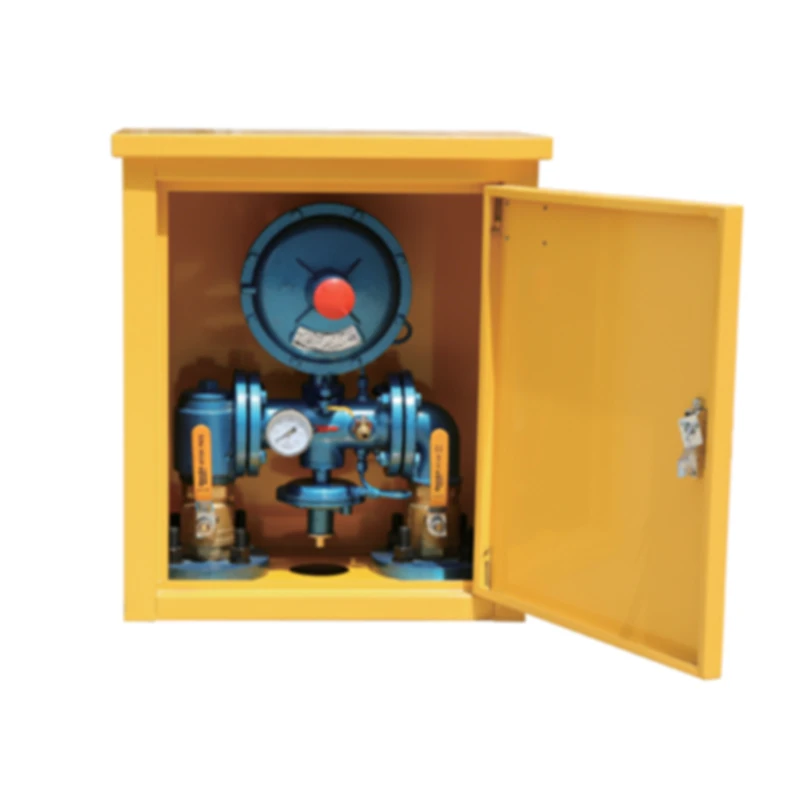
Nov . 10, 2024 17:15
Back to list
Pneumatic Control Valve Operation and Applications in Modern Industrial Systems
Understanding Pneumatic Control Valves
Pneumatic control valves play a crucial role in various industrial applications, specifically where compressed air is utilized as a source of power. These valves regulate the flow and pressure of air in pneumatic systems, ensuring that machinery operates efficiently and safely. In this article, we will explore the workings, types, applications, and benefits of pneumatic control valves.
What is a Pneumatic Control Valve?
A pneumatic control valve is a device that regulates the flow of compressed air or gas within a pneumatic system. By adjusting the valve’s position, it can control not only the amount of air flowing through but also the pressure within the system. These valves can be automated or manually operated, and they come equipped with a range of features that allow for remote monitoring and control, enhancing operational efficiency.
Types of Pneumatic Control Valves
Pneumatic control valves can be categorized into several types, each designed to fulfill specific operational requirements
1. On/Off Valves These are the simplest types of control valves, providing a binary function—fully open or fully closed. Commonly used for applications requiring a straightforward control of airflow.
2. Flow Control Valves These valves are designed to maintain a consistent flow rate regardless of pressure fluctuations. They are essential in applications where constant motion is critical, such as in pneumatic cylinders.
3. Regulating Valves These valves automatically adjust the flow of air in response to variations in system pressure or demand. They ensure that the system operates within safe limits and enhances overall efficiency.
4. Directional Control Valves This type determines the path through which the compressed air will flow, controlling the operation of actuators and cylinders in the system. Depending on their design, they can manage multiple flow paths.
5. Proportional Control Valves These advanced valves allow for precise control over flow and pressure, making them ideal for applications requiring fine-tuned adjustments.
pneumatic control valve

Applications of Pneumatic Control Valves
Pneumatic control valves find applications across a wide spectrum of industries. In manufacturing, they manage the operation of pneumatic tools and machinery, enabling efficient assembly lines. In automation systems, they control actuators and robots, ensuring precise movements and operations.
In the food and beverage industry, pneumatic control valves maintain hygienic processes by regulating air and liquid flow in processing and packaging equipment. Additionally, in the automotive sector, they are used for controlling paint sprayers and assembly equipment, ensuring quality and efficiency.
Benefits of Pneumatic Control Valves
The adoption of pneumatic control valves offers numerous benefits
- Efficiency By effectively regulating air flow and pressure, these valves optimize the performance of pneumatic systems, which can lead to energy savings.
- Safety Pneumatic systems can operate under high pressure. Control valves help maintain safe operating conditions, reducing the risk of failure or accidents.
- Versatility With a variety of types available, pneumatic control valves can be tailored to meet the specific needs of different applications, allowing for flexible design and integration in various systems.
- Cost-Effectiveness Pneumatic systems are generally less expensive to operate than hydraulic systems. Control valves contribute to this by minimizing energy consumption and extending equipment lifespan through precise control.
Conclusion
In conclusion, pneumatic control valves are an indispensable component of modern industrial systems. Their ability to regulate air flow and pressure leads to increased efficiency, safety, and versatility across various applications. Understanding the types, functions, and benefits of these valves is essential for anyone involved in the design or operation of pneumatic systems, ensuring optimal performance and enhanced productivity. As technology progresses, we can expect further innovations that will enhance the efficiency and effectiveness of pneumatic control valves in the years to come.
Latest news
-
Safety Valve Spring-Loaded Design Overpressure ProtectionNewsJul.25,2025
-
Precision Voltage Regulator AC5 Accuracy Grade PerformanceNewsJul.25,2025
-
Natural Gas Pressure Regulating Skid Industrial Pipeline ApplicationsNewsJul.25,2025
-
Natural Gas Filter Stainless Steel Mesh Element DesignNewsJul.25,2025
-
Gas Pressure Regulator Valve Direct-Acting Spring-Loaded DesignNewsJul.25,2025
-
Decompression Equipment Multi-Stage Heat Exchange System DesignNewsJul.25,2025

